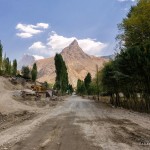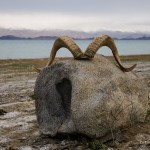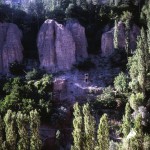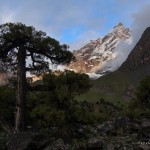The Khoja Mumin Salt Mountain is a natural wonder in the South of Tajikistan that dates back over 20,000 years. In ancient times, salt (in addition to gold and horses) was one of the country’s three greatest resources for trading along the Great Silk Road. The enormous oval-shaped Khoja Mumin salt hill expands over eight kilometers and towers 900 meters above the Khatlon Valley and tempts biologists, geologists, avid hikers, and mountaineers from far and wide.
One of the first recorded visits to Tajikistan’s salt mountain was by Venetian explorer, Marco Polo, many centuries ago. He penned: “Salt here is solid and it is broken with big spades; there is so much salt that it would be enough for everyone till the end of the world.” And this was not an exaggeration. It is estimated that there are around 30 billion tons of salt reserves here, making it the second-largest surface salt hill on Earth. Only the Kuhi Namak Mountain in Iran tops it at 1,200 meters tall.
While nobody is certain as to how the Khoja Mumin salt hill was formed, scientists think that it may have been formed from a warm ocean that eventually shifted and shrank to form a large lagoon. The lagoon contained saltwater from the sea and over time, the water evaporated until only the salt remained. Then many years later still, Khoja Mumin was formed by the Earth’s tectonic movements eventually forcing the salt upwards.
The salt from Mount Khoja Mumin has been used for thousands of years for all sorts of uses. In olden times, the rock salt was quarried using ancient tools by hand. These days, there are salt plants that extract the salt much faster using a natural evaporation process. Saltlick, a salty mineral that is fed to domestic cattle is also mined here.
Salt Mountain Khoja Mumin features over 160 medicinal springs and a massive network of caves. The biggest cave is estimated to be over a kilometer long! The caves are home to bats, insects, and streams run through them towards the base of the mountain. Interestingly, outside of the rainy season between May and November, there are still mysterious streams flowing through the mountain despite there being no rainfall.
This striped salt hill in Tajikistan and its cave systems are constantly being reshaped and reformed by the weather. At any given time, you can see salty sculptures that look like towers, colonnades, and features but they will all wash away and reform over time. Despite its saline nature, the slopes of the mountain still sustain life. You will see pistachios, pear trees, maples, junipers, and all sorts of herbs and shrubs. Visiting the salt hill has an ethereal feel because when wind passes through the many tunnels in the mountain, past salt stalagmites and stalactites, it causes some unusual and melodious sounds.
For those looking for a Tajikistan adventure, hiking to the top of the Khoja Mumin Salt Mountain, Tajikistan provides a challenge. The surface is dotted with sharp peaks and craters that can easily cave in. For this reason, the salt hill is best visited with an expert local guide from Paramount Journey who can get you there and back safely. Alternatively, a jeep safari to the base of the mountain and wildlife watching in the surrounds may be a better fit.

























